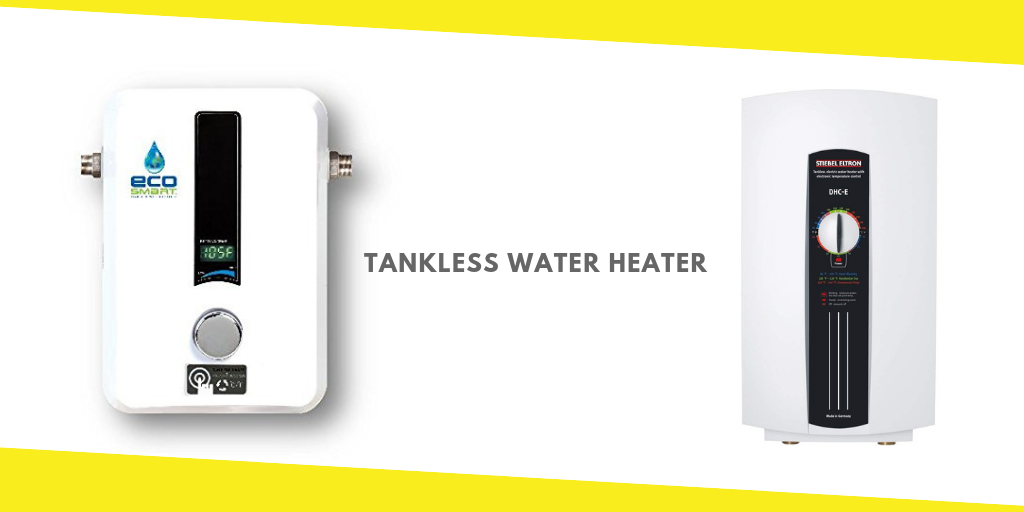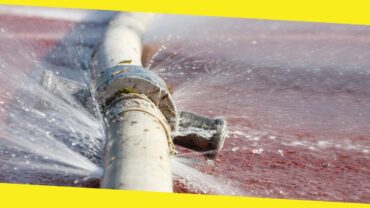Everything You Need To Know About Tankless Water Heater
This post was last updated on May 3rd, 2024

What it is, how it works and types of tankless water heater
Tankless water heaters are also known as water heaters that provide instantaneous, continuous flow, inline, flash, on-demand or instant-on flow of warm and hot water. This particular type of water heater is gaining popularity due to its energy saving ability as well as storage saving advantage. Tankless water heaters, as the name implies, do not store heated water in a tank.
Tankless water heaters, therefore, are the better choices if you want to reduce your high usage of natural gas or other types of fuel or energy source. Less energy is required for this type of water heater as it does not expend energy to conserve the heat of the water. Because of this, energy consumption is reduced and the cost of energy expenditure will also decrease.
Electric tankless heaters a recent trend and commonly referred to be the better choice, makes it possible to heat your water without relying on natural gas as the fuel. This is also one of the reasons that the green movement like to tell people to convert to the tankless type of water heaters.
Related: RV Water heater Guide
Parts in a Tankless Water Heater
The system does not allow heated water to be stored and maintained as it heats water instantly when they move through the heater. Right after crossing through the heating element, hot water is produced and can be used immediately. Most tankless water heaters have a limited amount of output at any one single moment.
A tankless water heater is usually consisted of:
- A flue for toxic gas as the byproduct of burning fuel to leave from.
- Draft diverter/draft hood is fitted at the end of the flue where the gas leaves the system and the house. It’s important to have the correct size and accessory for the tank heater to safely evacuate the poisonous gas out or you’ll risk backdrifting them back into the tank.
- Water-in valve which is shut off when the tank needs cleaning or repairing. This is also where cold water enters the heater system.
- Water-out valve, a pretty self-explanatory part, is where hot water flows out from the system after being heated.
- T&P (Temperature and pressure) relief valve which basically allows pressure and heat to be released to prevent the whole system from blowing up. This system will only discharge once in a while, so if yours happen to discharge quite frequently, you will need to get your water heater a check.
- Heating elements are the heat exchangers that rapidly spread the heat from one to another from the combustion of the gas or the current of electricity. These are the main conductors to heat up the water on-demand.
- The insulator is the outer case that protects the system from external influence. To make sure of the highest efficiency of heating, the insulator must be able to prevent significant loss of heat.
- Thermostat, or water temperature sensors, regulate the temperature of the water that is dispersed. A water heater always has two thermostats that regulate the maximum and minimum temperature of the water. The thermostat will automatically shut off the heater should it detect overheating issue.
- Burner ignites the fire to burn the gas and create heat that will heat the water. It’s important to think about the elements that you want your flame to be burning on as well. It has to be of high-quality stainless steel, and last long enough to gain your return on investing this particular type of heater.
- Thermocouple’s role is important in making sure that you are burning effectively. It regulates the flame pilot that burns the gas and will shut the gas valve off if the flame pilot is suddenly put off. It’s important to make sure that the fire is blueish to indicate efficient use of energy. If it’s yellow, you are burning through your fuel quicker than it should.
- Control panel is the place where the temperature is displayed and the memory chip is installed. This allows it easy for experts to know what is wrong with your heater when it needs maintenance or repairing.
As you can guess, some of these parts don’t exist in a tankless water heater that operates by electricity. But whether it uses natural gas, propane or electricity, it has a similar way in heating the water up.
How Does A Tankless Water Heater Works
Water enters the system once you turn on your faucet. Cold water is sprayed by the dip tube across the heat exchangers that are already as hot as the fuel burns/electricity flows. The temperature follows how far you turned your faucet. Water is heated up and due to the sudden rise of temperature, they are easily pressured upward and exit the system. There, they make their way out of the mouth of your faucet.
The thermostat is always keeping track of the temperature of the water that goes in and out, especially the one that goes out. It’s a protection layer that will alert the system to shut off if it detects overheating of water. If you are burning on gas, the byproduct will leave through the flue, outside your house.
It’s also important to keep track of the amount of water output you are making from an on-demand water heater. They usually have a limit and if you should surpass that, the water will not come out as warm as you wished it would.
Types Of Tankless Water Heaters
There are also mainly two types of tankless water heaters: point-of-use heaters and whole-house heaters. Each type of heater has a different use and advantage when compared.
Point-Of-Use (POU) heaters are smaller, but due to their size, they are able to deliver hot water right when you want it to. They are the ones that you can install under your kitchen sink and are the types that easily heats up water right before they go out of the faucet. These are effective but limited to only the path that it’s installed on.
Point-of-use water heaters usually run on electricity.
Having them run on natural gas would mean that you have a higher risk of fire and explosion on every sink and water outlet that require hot water.
Whole-house heaters are big water heaters that heat water and then deliver it across the house. You only need to install one to provide hot water for the whole house as it has a much bigger flow rate capacity compared to point-of-use types.
When compared, whole-house type provides a higher current of hot water across the house as it has a higher flow rate capacity, but lag time proves to be a problem. In big houses, the amount of time needed to transport the water from the heater to your faucet can take up to a minute or even more. This is why point-of-use models are preferred.
Recommended For You
Leak Detection in McKinney, TX: 10 Signs You Have Leaks in Your Home
Most Inside
Most Inside offers high-quality recommendations and valuable updates to enhance all aspects of your life, providing premium guidance and enriching experiences.




